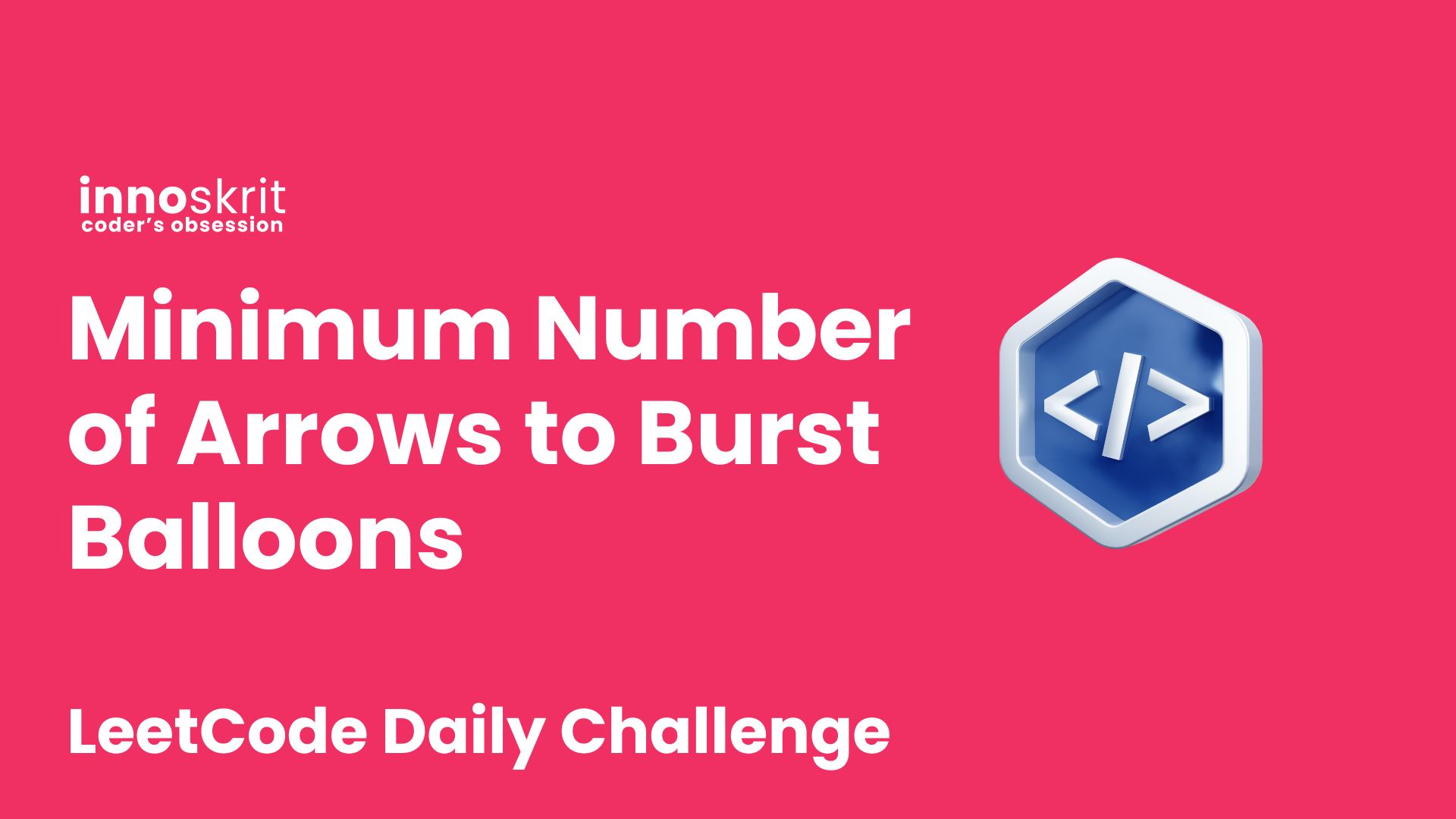Problem Statement
There are some spherical balloons taped onto a flat wall that represents the XY-plane. The balloons are represented as a 2D integer array points where points[i] = [xstart, xend] denotes a balloon whose horizontal diameter stretches between xstart and xend. You do not know the exact y-coordinates of the balloons.
Arrows can be shot up directly vertically (in the positive y-direction) from different points along the x-axis. A balloon with xstart and xend is burst by an arrow shot at x if xstart <= x <= xend. There is no limit to the number of arrows that can be shot. A shot arrow keeps traveling up infinitely, bursting any balloons in its path.
Given the array points, return the minimum number of arrows that must be shot to burst all balloons.
Example 1
Input: points = [[10,16],[2,8],[1,6],[7,12]]
Output: 2
Explanation: The balloons can be burst by 2 arrows:
- Shoot an arrow at x = 6, bursting the balloons [2,8] and [1,6].
- Shoot an arrow at x = 11, bursting the balloons [10,16] and [7,12].
Example 2
Input: points = [[1,2],[3,4],[5,6],[7,8]]
Output: 4
Explanation: One arrow needs to be shot for each balloon for a total of 4 arrows.
Try here before watching the video.
Video Explanation
Java Code
class Solution {
public int findMinArrowShots(int[][] points) {
Arrays.sort(points, (a, b) -> Integer.compare(a[1], b[1]));
int arrows = 1, end = points[0][1];
for(int i = 1; i < points.length; i++) {
if(end >= points[i][0])
continue;
arrows += 1;
end = points[i][1];
}
return arrows;
}
}
C++ Code
class Solution {
public:
int findMinArrowShots(vector<vector<int>>& points) {
sort(points.begin(), points.end(), [](const vector<int>& a, const vector<int>& b) {
return a[1] < b[1];
});
int arrows = 1, end = points[0][1];
for (int i = 1; i < points.size(); i++) {
if (end >= points[i][0])
continue;
arrows += 1;
end = points[i][1];
}
return arrows;
}
};
Python Code
class Solution:
def findMinArrowShots(self, points: List[List[int]]) -> int:
points.sort(key=lambda x: x[1])
arrows = 1
end = points[0][1]
for i in range(1, len(points)):
if end >= points[i][0]:
continue
arrows += 1
end = points[i][1]
return arrows
Javascript Code
var findMinArrowShots = function(points) {
points.sort((a, b) => a[1] - b[1]);
let arrows = 1;
let end = points[0][1];
for (let i = 1; i < points.length; i++) {
if (end >= points[i][0])
continue;
arrows += 1;
end = points[i][1];
}
return arrows;
};
Go Code
func findMinArrowShots(points [][]int) int {
sort.Slice(points, func(i, j int) bool {
return points[i][1] < points[j][1]
})
arrows := 1
end := points[0][1]
for i := 1; i < len(points); i++ {
if end >= points[i][0] {
continue
}
arrows++
end = points[i][1]
}
return arrows
}
Complexity Analysis
Time Complexity: O(N*logN), this is because we're sorting the array.
Space Complexity: O(1), we're not taking any extra space, but to be specific, based on the sorting algorithms it might take some extra space based on language.
